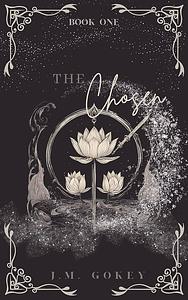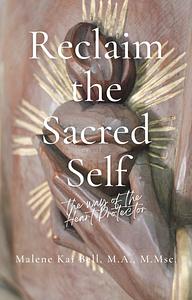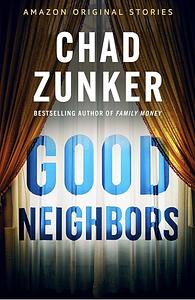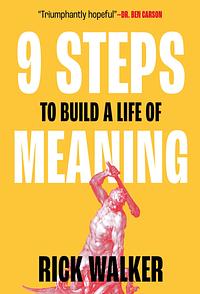You need to sign in or sign up before continuing.
Take a photo of a barcode or cover
hannahleelovestoread's Reviews (635)
hopeful
informative
inspiring
fast-paced
Own Your Future is an extension of a wealth management blog by the author, certified financial planner (CFP) Echo Huang. Within the book’s pages, Huang tells of her childhood in a Chinese village so poverty-stricken that she and her family lacked running water. An abiding belief in the importance of education, she writes, was her first step towards success. She quotes Malcom X: “Education is the passport to the future, for tomorrow belongs to those who prepare for it today.” Huang also strongly advises readers to establish certain guiding principles, including maintaining adaptability, setting goals, and seizing opportunities. She speculates that some lack of financial self-control may be due to hyperbolic discounting, or the preference for small payoffs now as opposed to larger ones later. Her solutions to this are saving for retirement and making investments, both as early as possible.
I enjoyed this book immensely. It provided reader-friendly financial advice in the form of a literal rags-to-riches story. After finishing it, I feel more informed in my financial decisions, and I highly recommend it.
adventurous
challenging
dark
emotional
inspiring
mysterious
reflective
tense
fast-paced
Plot or Character Driven:
A mix
Strong character development:
Complicated
Loveable characters:
Complicated
Diverse cast of characters:
Yes
Flaws of characters a main focus:
Yes
This collection of five action-packed novellas set in the near future features Irene, a tough and direct “moonchild” who has come to Earth to interview for a position at the South Kent Special Care Facility in England. Having endured the unspeakable trauma of losing both parents when she was young, Irene feels adequately equipped for a position at the hospital working with the seriously mentally ill on a daily basis. But even when she lands the job, nothing could have prepared her for the hospital’s rampant workplace politics and corruption or for the widespread discrimination against her due to her formative years spent on the moon.
When I began this book and discovered just what a “moonchild” was, I expected hard science fiction with extremely futuristic vibes. Instead, however, Irene’s struggles as a woman, an underdog, and a perpetual outsider felt all too familiar to today’s world. As a neurodivergent woman living in what some sociologists have deemed the “Age of Anxiety,” I felt a deep sympathy with Irene’s plight throughout all five seamlessly blended novellas. I can do nothing but recommend this story to any and all readers.
Graphic: Mental illness
Moderate: Bullying, Violence, Grief, Death of parent
challenging
dark
tense
fast-paced
Plot or Character Driven:
Plot
Strong character development:
No
Loveable characters:
Complicated
Diverse cast of characters:
No
Flaws of characters a main focus:
Complicated
Graphic: Domestic abuse, Infertility, Infidelity
Minor: Murder
adventurous
emotional
inspiring
reflective
medium-paced
In his poetry collection Reflections on Mountaineering, Alan V. Goldman reveals both a respectful love of nature and an experimental writing style. All of the poems in this collection are written in free verse, and those that follow a rhyme scheme are disorganized and inconsistent by design. Using the casual second person, Goldman alternately addresses his audience and any given mountain. He employs breathtaking assonance and alliteration with phrases like “evanescent embrace” and “summit shimmers” in the poem “Being and Nothingness.” My favorite poem in the collection, however, is “What Is a Mountain’s Meaning for Mankind?” In that captivating piece, Goldman quotes three mountain men of history: William Blake, who composed literature about the natural world; John Muir, a naturalist whose work inspired the creation of the National Park System and the Sierra Club; and George Mallory, a mountaineer who disappeared while climbing Mount Everest. This is a fine read, and I recommend it to nature lovers and poetry fans alike.
This book wasn’t bad at all; several aspects were promising. However, the descriptions of the vivid nightmares related to the content warnings I mention below were personally triggering to me.
Graphic: Medical trauma, Fire/Fire injury
informative
medium-paced
In this book, I learned about paganism and its five core tenets: runes, herbalism, Wicca, shamanism, and manifestation. Paganism is a combination of many different religions and belief systems. Contrary to popular belief, it is significantly similar to mainstream Western thought and even Christianity. Historically, for example, pagan runes (symbols thought to have magical properties) have been found in Christian churches asking God for blessings and protection. Readers can see another pagan nod to Christianity in shamanism’s recognition of the angels and seven archangels of the Bible. I was shocked to read in the section on herbalism that an estimated total of 88% of the world’s population integrates herbal medicine into their daily lives to some degree. My modern sensibilities are identified most closely, however, with this Francesco Filippazzo quote on manifestation: “You do not manifest what you want; you attract what you are.” This is a fascinating and educational book, and I highly recommend it to all readers.
emotional
hopeful
inspiring
reflective
medium-paced
In Reclaim the Sacred Self: The Way of the Heart Protector, author Malene Kai Bell writes to a primary audience of women who have lost their confidence and/or sense of self. She informs these women that the purpose of the book is to transform them into “Heart Protectors,” or dutiful guardians of their own hearts. As one of Bell’s readers, I found it challenging but incredibly helpful to identify and independently define my core values. These values, Bell writes, should inform one’s expectations, boundaries, and sense of autonomy in relationships. An example of one value upon which Bell places particular emphasis is sovereignty, or the acceptance of all aspects of oneself independent of any other person or outside situation. Perhaps the premise of the book can best be summarized by this Alice Walker quote it references: “We are the ones we’ve been waiting for.” I highly recommend this book to any woman struggling with her confidence or sense of self.
hopeful
informative
inspiring
reflective
medium-paced
This book, a collection of instructions on the use of various holistic healing methods, is one of the most informative pieces I’ve read recently. The highly informative but reader-friendly text is divided into five main sections featuring the following healing concepts, respectively: numerology, astrology, reiki, crystals, and chakra balancing. Each of these sections is further divided into five to seven pillars or foundations. For example, the pillars of reiki include “elements” and “energy.” While reading this book, I found the astrology section most fascinating, and I was surprised to learn that the origins of the fun we have with zodiac personality profiles today extend all the way back to Ancient Greece. I enjoyed the way this work combined more serious facts with fun tidbits; I learned about both a boom in interest in astrology with the rise of spiritualism in the early 19th century and the attribution of generational stereotypes to the notion of shared Pluto signs. This book is indisputably a master class on the basics of holistic healing methods, and I highly recommend it.
adventurous
dark
mysterious
tense
fast-paced
Plot or Character Driven:
Plot
Strong character development:
No
Loveable characters:
No
Diverse cast of characters:
No
Flaws of characters a main focus:
No
Graphic: Injury/Injury detail
Moderate: Death, Car accident, Murder
challenging
emotional
hopeful
inspiring
reflective
fast-paced
Rick Walker’s 9 Steps to Build a Life of Meaning is far more than meets the eye. Rather than prescribing readers a stale and forgettable self-help formula which promises to be simple, this book takes a revolutionary approach in proclaiming that nothing worth doing is easy. The titular nine steps are strikingly nontraditional; examples include “choose one worthy enemy” and “give away what you want to keep.” Employing a reader-friendly format brimming with bullet points and featured quotes, the text focuses on the behavioral examples of great men of history, with a particular focus on Alexander the Great and Jesus Christ. Though 9 Steps was written with young men in mind, women could easily benefit from the sage advice within its pages, as well. Perhaps the crux of the book’s message can be summed up with the following quote from Chapter Eight: “The effort you give today determines your forever.” This is a can’t-miss read for anyone hoping to find meaning in his or her life.
Graphic: Medical content, War





![Paganism [All in 1]: 575 Techniques & Insights for Inner Balance through Magic Practices. Find Spiritual Growth & Personal Transformation through Runes, Wicca, Herbalism, Shamanism & Manifestation by Ingrid Clarke](https://cdn.thestorygraph.com/qx116r54xtl09xtgcjz9kj1rfdbn)

![Energy Healing [All in 1]: 345 Techniques & Strategies to Unlock Cosmic Energies for Spiritual Transformation. Achieve Holistic Healing with Numerology, Astrology, Reiki, Crystals, & Chakra Balancing by Monique Wagner](https://cdn.thestorygraph.com/5n7agxsi5fga5qsu51hto4wuop4l)

